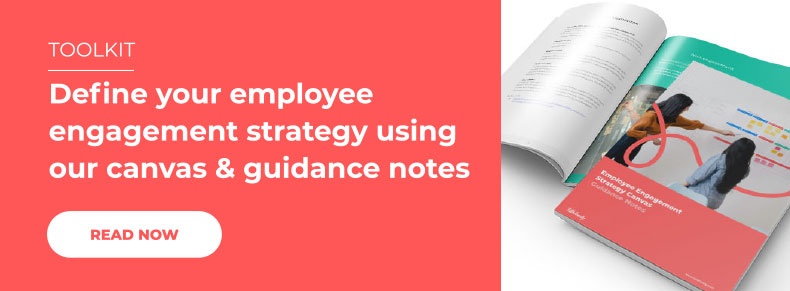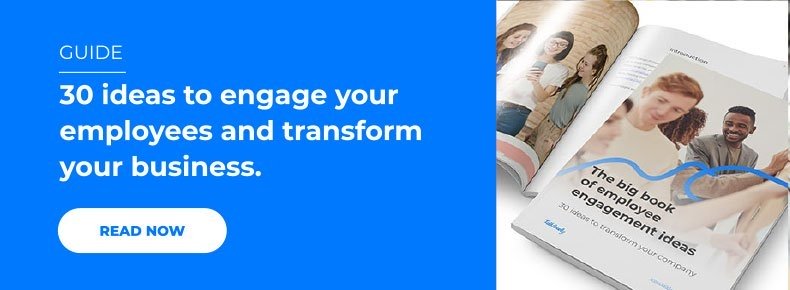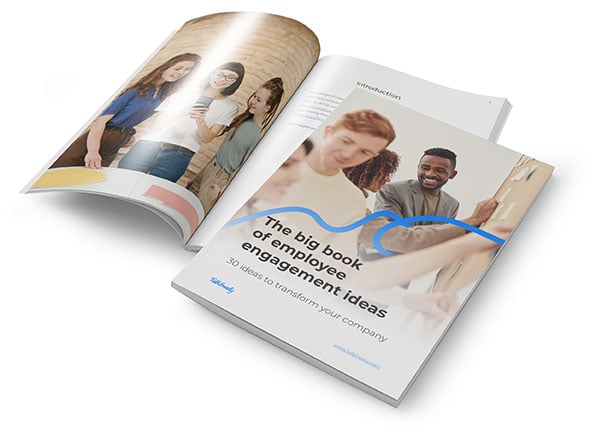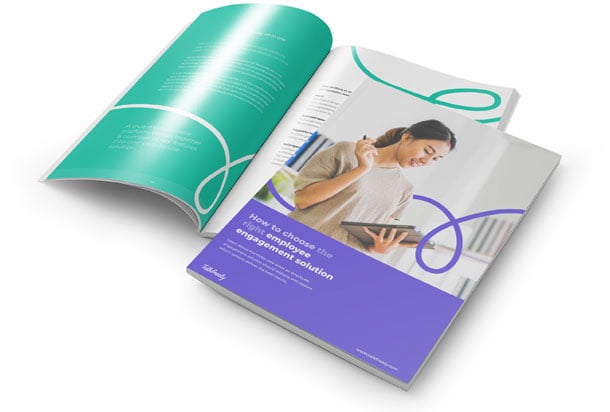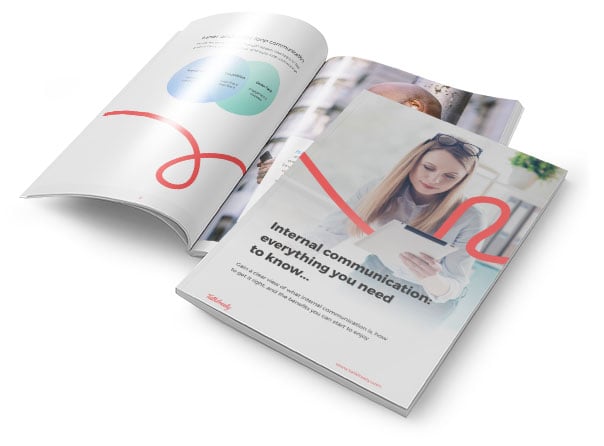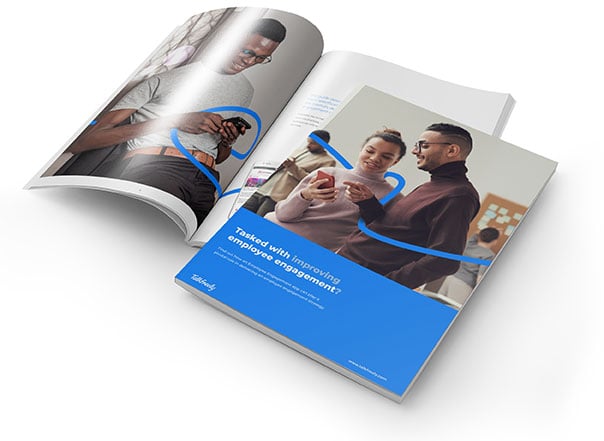Every business is different. From management structure and business goals to company ethics and culture, even companies operating within the same industry are unique. So how can you decide on an effective employee engagement model when one size doesn’t fit all?
It’s vital to base your decisions on a solid framework, and that’s why employee engagement models are so important. The right model will help you significantly improve performance and motivation across your organisation. The challenge lies in deciding which model is suitable for your workforce.
With so many definitions of employee engagement and so many variations on employee engagement theory, it is no surprise that there are many models to draw upon. Academics have been researching employee engagement for decades, studying all factors ranging from the working environment through management behaviour to the psychological contract between employer and employee.
Successful organisations have adopted the approach that an employee engagement framework is a guide, not a set of instructions, to achieving higher levels of employee engagement. It is essential to study the various employee engagement theories and models and see which apply to your individual business needs.
You may also find that a previous model is no longer delivering as expected. The world of work has changed dramatically over the last few years, and the shift from office to remote to hybrid working patterns has left many businesses in a state of flux. Now that it is clear hybrid working is here to stay, it’s an excellent time to re-evaluate your employee engagement model. Is it still delivering, or do you need to explore other options?
However unique your business needs, there are three principal methodologies to consider when creating a model of employee engagement. Take a look and see which elements will work best for your specific situation.
Employee Engagement Model #1
Focus on Job Satisfaction
One key type of employee engagement model is focused on job satisfaction. This model supports a connection between employee engagement and aspects such as meaningful work, role clarity, assigning work that matches the employee’s strengths, resources to do the job well and recognition.
Research backs up the efficacy of such an employee engagement model framework. Chaudhry et al. published a report that found clear links between the working environment, job satisfaction and levels of employee engagement. Employee engagement and retention are especially high on the priority list, with businesses keen to hold on to talent and prevent staff turnover.
Job satisfaction is even more of an issue in the post-Covid world. With working patterns disrupted and economic uncertainty high on the agenda, it is not surprising that job satisfaction has taken a hit. According to a recent survey, 45% of workers admitted to feeling burned out.
Of course, job satisfaction and employee engagement are not the same things. Some organisations, however, could benefit from utilising a job satisfaction based model in their employee engagement strategy.
This employee engagement model could be right for your business if:
- a reasonable proportion of the workforce’s activities are repetitive
- the organisation is interested in shaping a strengths-based staff development framework
- employees have been shown to respond particularly well to praise and other forms of recognition
- employees are keen to shape and improve their own working environments and processes
Employee Engagement Model #2
Focus on Psychological Well-Being
Some researchers argue that organisations need to go further and understand how people express themselves at work to improve employee engagement. These models of employee engagement are especially relevant in today’s business environment, where we are seeing a fresh emphasis on mental wellness.
This line of work goes back to Kahn’s dimensions of employee engagement in the 1990s, which concentrated on cognitive, physical and emotional engagement alongside the psychological conditions of meaningful work, having the right energy, the right resources and feeling safe. This final element is now significant in the post-Covid world, where safety at work is no longer considered guaranteed.
You can see that Kahn’s work does contain some elements from the job satisfaction staff engagement model mentioned above. However, his research was the start of decades of work by researchers on improving employee engagement through the psychological relationship between companies and their staff.
Assessing workers' psychological well-being and which employee engagement initiatives can be implemented to increase motivation and productivity is a tricky business. This can only be done by conducting a comprehensive employee engagement survey and other information-gathering methods, such as focus groups or discussion boards.
This is where an employee engagement platform can assist with your strategy. With built-in feedback modules, it makes it easy to schedule regular polls and surveys across the organisation. A good employee engagement app will also help you gather the results into meaningful data. Detailed reports should provide the data needed to create a strategy to improve the psychological relationship between the organisation and its workforce.
This employee engagement model could be right for your business if:
- the company employs a wide range of people in different locations and in different jobs, where technology such as an employee appcan achieve the remote communications and engagement required
- there is little evidence that more traditional recognition methods have improved employee engagement levels
- return on investment will be greater if the organisation focuses on encouraging discretionary effort such as ‘going the extra mile’
Employee Engagement Model #3
Focus on State of Mind
This final model of employee engagement goes one step further. It explores the psychological aspects of the employee engagement model framework to improve employee engagement and motivation.
One example of this is a study by Schaufeli and Bakker, where they describe engagement as ‘a positive, fulfilling, work-related state of mind’. Again, although the researchers are discussing psychology within their study, they also incorporate those more traditional elements of job design, demands and resources. They advocate the principle of ‘positive psychology’ and individual interventions (such as stress management programmes that use a cognitive behavioural approach) to reduce negative indicators such as stress and burnout.
The state of mind model is particularly relevant for today’s working environment. Employers are becoming increasingly aware of the importance of good mental health and individual needs. They are also taking more notice of the effects of hybrid working on the needs of their employees. Research by the Harvard Business Review indicates that the pandemic has had a considerable impact on the state of mind of the workforce. 75% of employees say they feel more socially isolated, 57% feel greater anxiety, and 53% say they feel more emotionally exhausted.
This staff engagement framework focuses more on the individual, making employee engagement activities more effective. However, it creates barriers to employee engagement because it can be resource-intensive to implement appropriately. Such an employee engagement model would need a responsive employee engagement platform that could overcome some of the communications challenges in achieving effective bespoke engagement with employees.
This employee engagement model could be suitable for your business if:
- employees work in roles that have high-stress levels or a heavy workload and are prone to burnout
- it is likely that employees will be keen to engage in individual programmes tailored to their needs
- you are prepared to implement technology such as an employee appthat allows for a bespoke approach
Employee Engagement Models in Practice
Regardless of which model you choose, the goal is obviously for both the organisation and its workforce to benefit. When considering how to engage employees, it is vital to look at the bigger picture. Each of the employee engagement theories and models discussed above may suit different types of employees; for example, organisations in the knowledge-based sector may be more interested in the psychology-based frameworks as they may be a better fit for employee needs.
What is more likely is that elements of each model will be relevant to your employees. In order to know for sure, it is essential to encourage employee voice and obtain as much information on what is important from your workers before any attempt is made to create an employee engagement model. This is particularly relevant in the post-Covid landscape, where employees have been increasingly distanced from the office and each other. It is vital to ensure they are given a platform for their opinions and ideas.
It is also worthwhile to look at existing practices to assess what impact (positive and negative) they have on current employee engagement statistics. For example, some organisations have a talent management strategy in place, but is it inadvertently giving the message to the workforce that most of the attention is being given to a select few? Suppose the principles of talent management are widened so that each employee has an opportunity to participate in career development discussions. In that case, everyone will be more likely to feel valued and included.
In the hybrid working environment, care should be taken to avoid inadvertently giving more attention to office-based employees to the detriment of remote workers. A revised employee engagement model may be required to ensure that each tranche of employees feels equally valued and appreciated. Your model needs to include both sections of the workforce and ensure they are treated with true equality.
From the many employee engagement and satisfaction models available, a hybrid framework may be the right option for your organisation. Only the right tailored framework, informed by employee feedback, will meet the organisation’s employee engagement objectives and deliver results on performance and motivation.
